Adventure School participates in the Amazon Services LLC Associates Program, an affiliate advertising program for sites to earn advertising fees by advertising and linking to amazon.com
Have you ever been out in the wild and had the feeling that you were being watched or that you weren’t alone? I’ve had that feeling many times. I never actually saw a mountain lion in these instances, but I’m fairly confident that one was somewhere nearby and a mountain lion attack could have been the result.
If you live or play anywhere in the western half of North America or about anywhere in South America, you live in potential mountain lion territory. If you live in this area and see deer frequently, you most certainly live among shadowcats – another name for Mountain Lions.
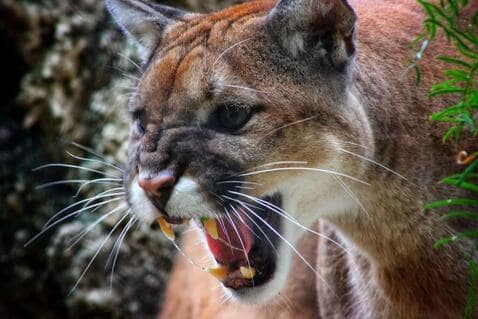
Equipping yourself with a bit of knowledge about how to avoid becoming kitty food will help you adventure more confidently and safely.
To give you a sense of the distribution and frequency of mountain lion attacks, I put together this map of all the recorded fatal cougar attacks within the United States.
All known fatalities from mountain lion attacks in the US
You can see cougars live primarily in the Western United States, but have the potential to range throughout most of the country. They also range throughout Canada and South and Central America.
Facts about Mountain Lions
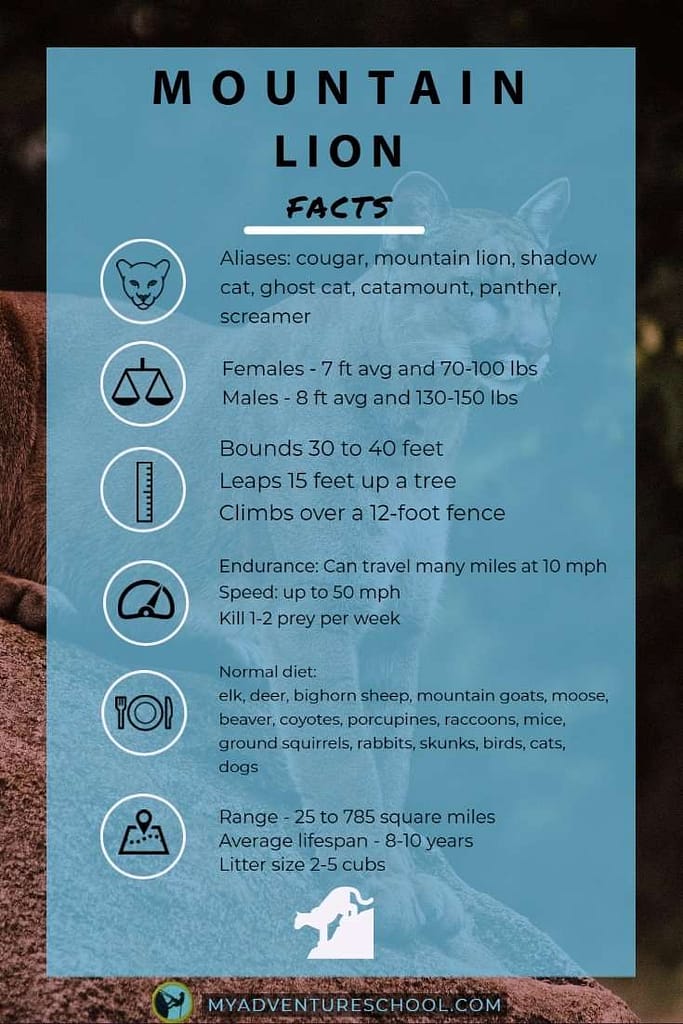
While most mountain lion attacks are from younger, less experienced mountain lions, the largest recorded mountain lion weighed in at 276 lbs. A big cat definitely capable of taking down any human. The bigger cats can take down moose and elk but primarily prey on deer.
Mountain lions typically kill 1 or 2 deer or other prey a week and will hide and guard large carcasses and feed on them for several days.
Caution: if you discover an animal such as a deer or elk covered or partly covered in debris, get out of the area.
Cougars will stay near their kills and defend them aggressively if they feel threatened.
Mountain lion attacks aren’t common
Although rare, mountain lion attacks on humans are most frequently because the cats are hungry and looking for a meal.
You don’t want to be the next mountain lion attack victim and you don’t’ want to let the fear of cougar attacks keep you from adventuring freely because it shouldn’t. Mountain lion attacks on humans are rarer than being struck by lighting.

Basic tips to avoid a cougar attack
A few basic skills and a bit of knowledge is all you need to feel confident and safe in avoiding a mountain lion attack.
We’ll start by understanding a bit about these mysterious and elusive cats. Cougars, like housecats and other felines, are predators. They’re incredible hunters with keen senses and stealthy movements. They live in areas where they can hide and sneak up on their prey with surprise.
Almost always, you’ll never know a mountain lion is near you. They could be 10 feet away and you may not even see them. Unlike most predators in North America, they will hunt and kill humans for dinner. This makes them incredibly dangerous, but knowing that mountain lions hunt primarily from dusk to dawn will give you some comfort during daytime activities.
Mountain lions also prefer to hunt smaller prey that isn’t in groups and stalk their prey until the perfect moment to strike.
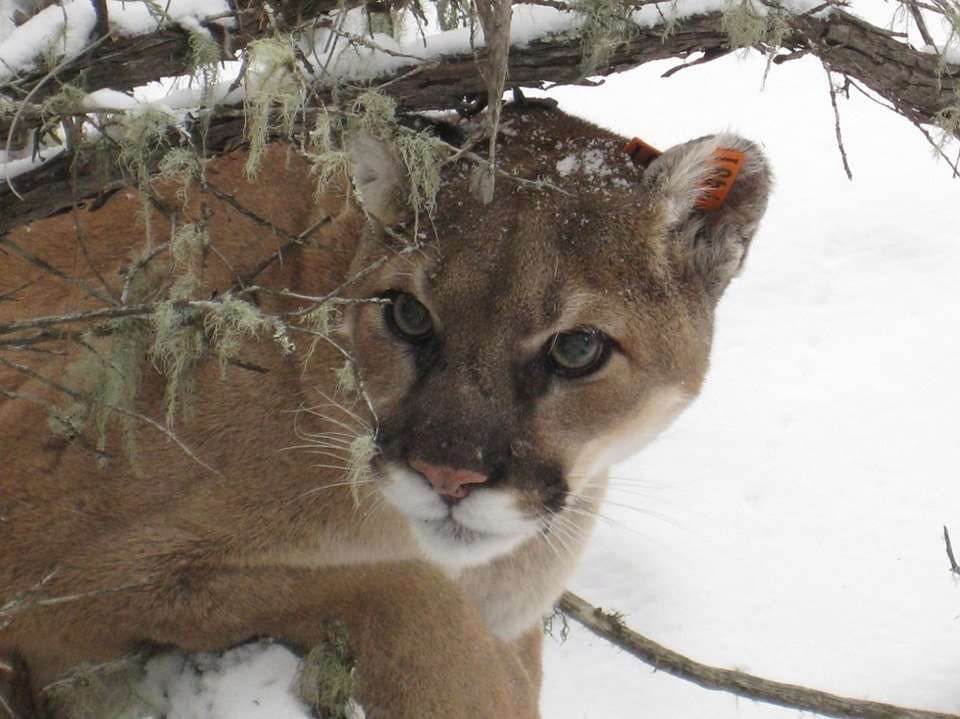
Knowing these facts can help us prevent mountain lion attacks by avoiding being alone in cougar country as well as taking precautions when playing in the woods before sunrise and after sunset. Making a lot of noise also helps scare them off and prevent them from coming too close.
If you’ve got children with you, keep a close eye on them. Don’t let children wander too far ahead or fall behind on hikes or wander off on their own at camp. Pets can also be easy prey so keep a close eye on them.
To appear larger, avoid crouching or squatting. There have been mountain lion attacks on adult males who were squatting down because they appeared smaller than they actually were.
What if I see a mountain lion?
-
Product on sale
 Bear SprayOriginal price was: $54.99.$44.99Current price is: $44.99.
Bear SprayOriginal price was: $54.99.$44.99Current price is: $44.99.
Most of the time, you’ll never see mountain lions that are around you, but if you do, here are a few tips to stay safe.
Carry (and know how to use) bear spray. Bear spray has been proven to be more effective at deterring predators like mountain lions and bears than guns.
If you’ve got a can of bear spray handy when a cougar appears, you can quickly spray it in the face and it will retreat without further incident.
Here’s the bear spray I’ve carried with me for years but never had to use.
If you don’t have bear spray, don’t run! Running can trigger a chase and you’ll never win against these cats that can run up to 50 mph and leap up to 40 feet in a single bound.
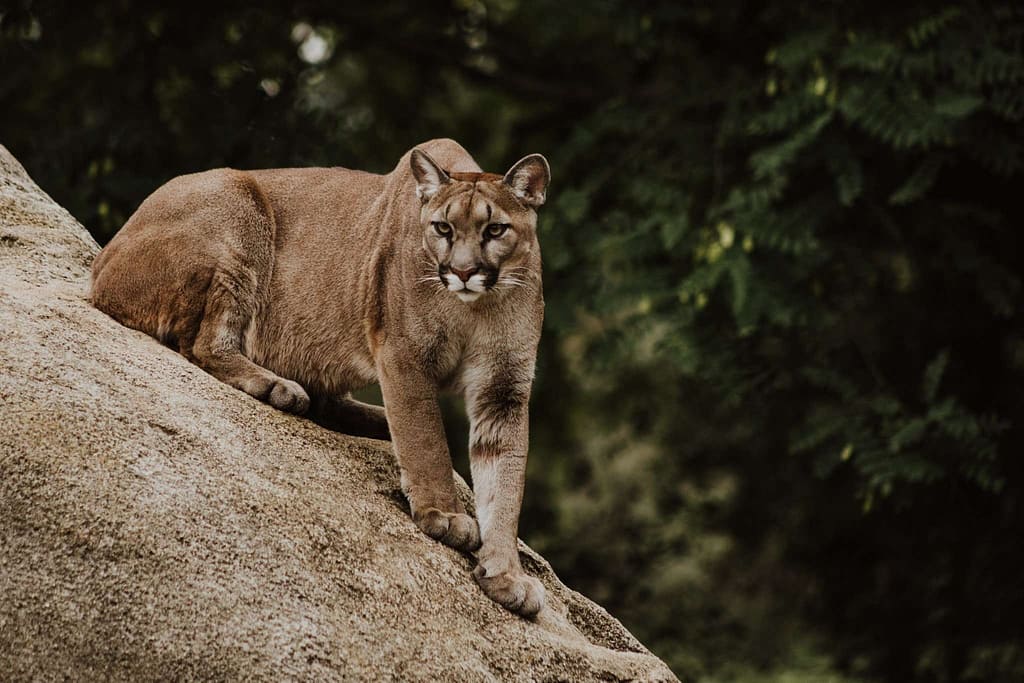
The best course of action is to stand tall, turn and face the kitty and confidently back away. Don’t turn your back on it. Do your best to look big and intimidating. Wave your arms, put kids or backpacks up on your shoulders, and arm yourself with hiking poles, sticks, or rocks. You can throw rocks too, but bending down to pick them up may leave you vulnerable to a quick pounce.
Most of the time, these tactics will work to scare off a hungry mountain lion that you’ve spotted before it’s too late, but typically, you don’t even know you’re being stalked.
What to do if I’m attacked by a mountain lion?
If you’re hiking along and suddenly find yourself being attacked by a cougar, you’re an incredibly unlucky and rare statistic, but you still have a good fighting chance.
Unlike Grizzly bears where playing dead is the best defense, with mountain lions, fighting back is the best option. Do your best to stay on your feet and wrestle the cat off your vulnerable areas like your face and neck and go for sensitive spots on the cougar like its face and neck. Stab it in the eyes, or try to choke it. With a bit of luck, you’ll convince the mountain lion that you’re not worth the fight.
If you scare the cat off, don’t let your guard down yet, it could still be looking for a chance to strike again. Contact 911 and the local fish and game officials so they can track the animal. Get out of the area immediately and administer first aid as needed.
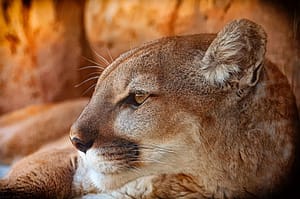
Be prepared and look for signs of mountain lion activity
You don’t need to let fear of mountain lion attack keep you from doing anything in the wilderness. The important takeaway from this article is that you can prevent attacks if you’re prepared and vigilant.
If you know what signs to look for you can have an early heads up if mountain lions are active in your area.
Look for cougar prey
The first sign is seeing their normal prey. If you see deer, elk, bighorn sheep, or mountain goats, you can bet cougars are also in the area. Be especially wary if you see a dead animal carcass, especially a freshly killed one.
Look for mountain lion scat.
It’s typically out in the open and about the size of human poop and it usually has hair in it.
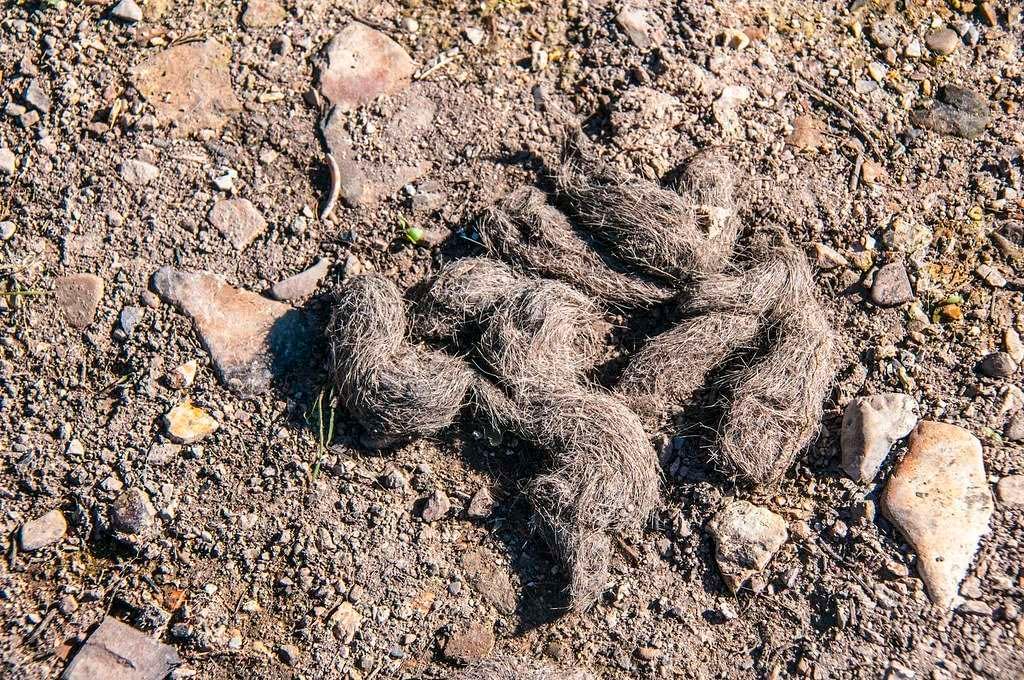
A fresh scat will indicate more recent mountain lion activity, but even an old one like in this picture indicates mountain lions frequent the area.
Look for tracks
If you see fresh mountain lion tracks, you can be certain one is nearby enough to be on the lookout. I’ve encountered mountain lion tracks several times, but still never seen the shadowcat.
Mountain lion tracks are easily recognized by their almost round, circular shape and lack of claw marks. Rarely, you’ll see claw marks, but since cats have retractable claws, you typically don’t. They typically walk in their own tracks leaving only one line of tracks with both front and rear paws imprinted in the same spot.
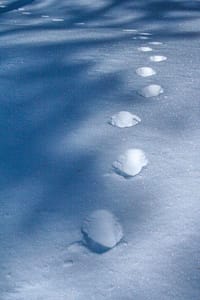
Their front paws are usually larger measuring about 3-4″ long by about 2-4″ wide. Cougars also have a prominently longer toe. Other animals including dogs, wolves, coyotes, and bears don’t have this feature, so if you get a distinct print to look at you can know if it’s a cougar or something else. Sometimes cougar prints are confused with bobcat or lynx prints. Cougars are much larger than these cats and have bigger prints with a longer gait pattern.
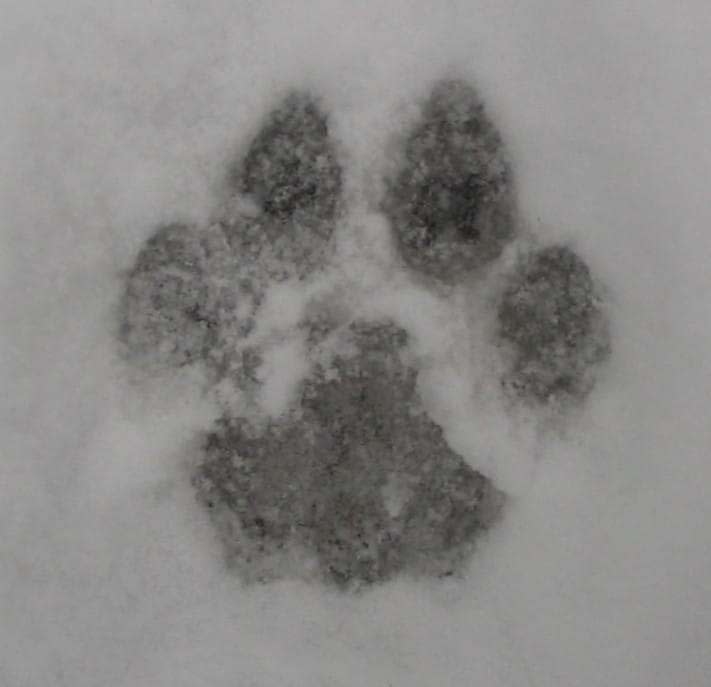
Read here for more on identifying predator prints.
Summing it up
So after reading this post, I hope you feel more confident in your ability to adventure in cougar country without fearing that you’ll be the next victim of a mountain lion attack.
It’s just not that likely. And now that you have a bit more knowledge on how to identify cougar activity and what to do to keep these amazing cats at bay, you can go out and enjoy your hiking, riding, and climbing without worry. Just don’t forget the bear spray.
Share your experiences
If you’ve had any encounters with the shadowcat, please share in the comments below, so others can learn from you.
- All known fatalities from mountain lion attacks in the US
- Facts about Mountain Lions
- Mountain lion attacks aren't common
- Basic tips to avoid a cougar attack
- What if I see a mountain lion?
- What to do if I'm attacked by a mountain lion?
- Be prepared and look for signs of mountain lion activity
- Summing it up
- Share your experiences


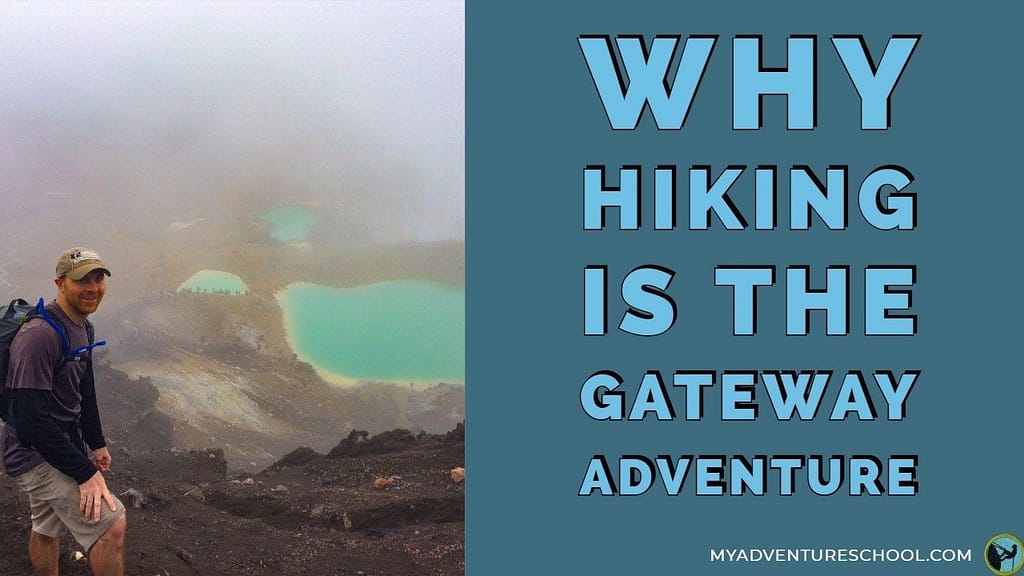
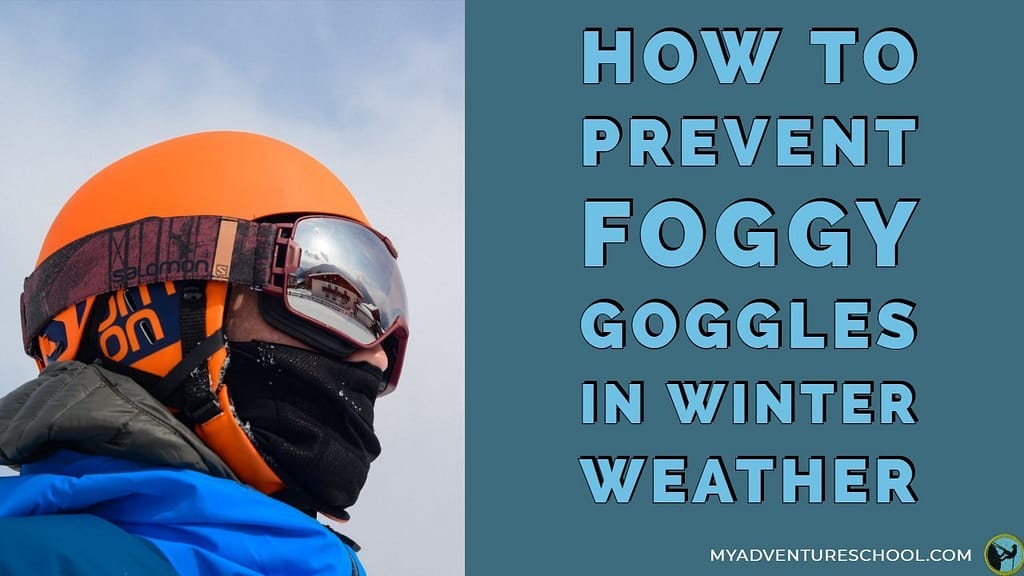

Having lived, worked, hiked and hunted in Western Montana all of my adult life, I have seen maybe 10 lions in my life including 2 Cubs and 2 close encounters. I’m certain many more have seen me.
In one case I spotted a lion stalking me but he was still 60-70 feet away and stopped the second he saw me see him, paused for a few seconds then trotted off.
Hey Roger, your experiences match my own. Thank you for sharing. These cats are elusive even though they’re all around the Western US. I always get the chills when I see one in the wild both because they’re often looking straight at me when I see them and because they’re such impressive creatures.